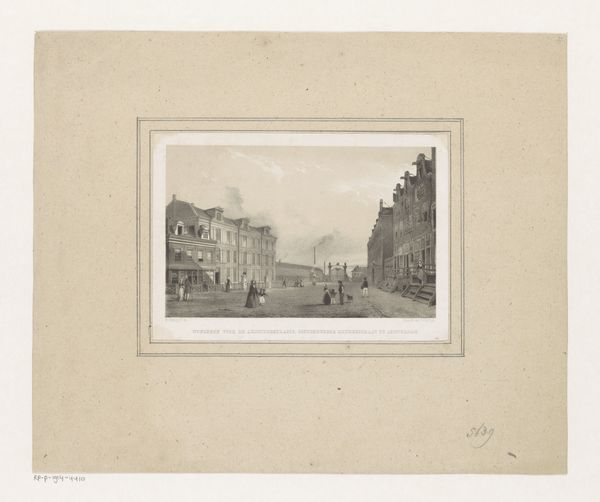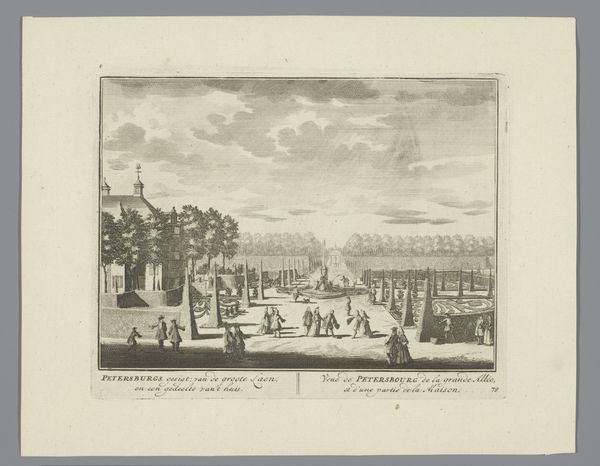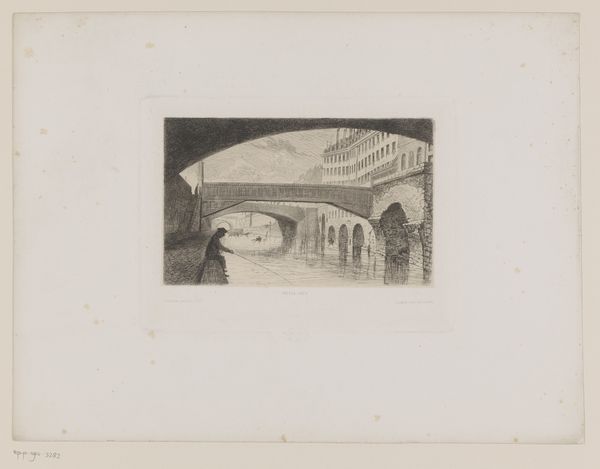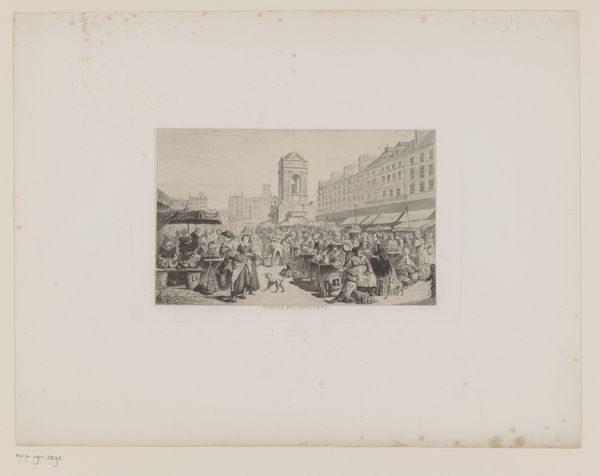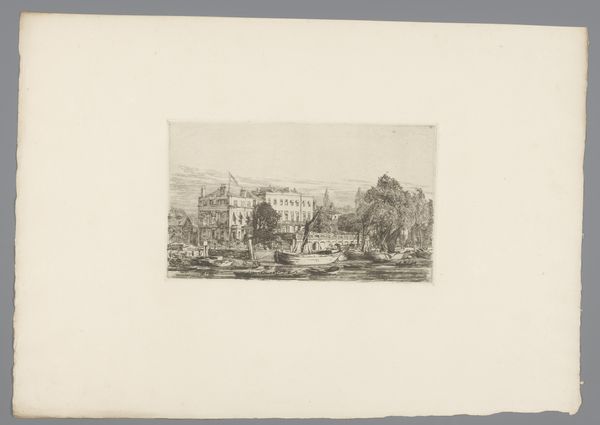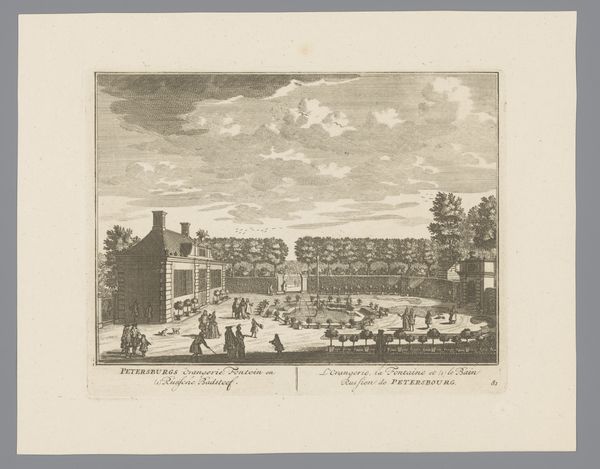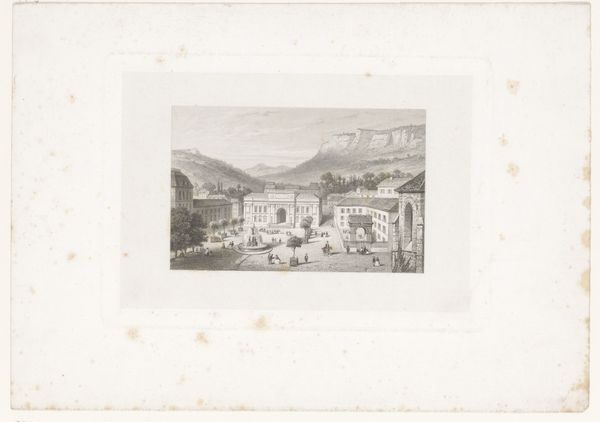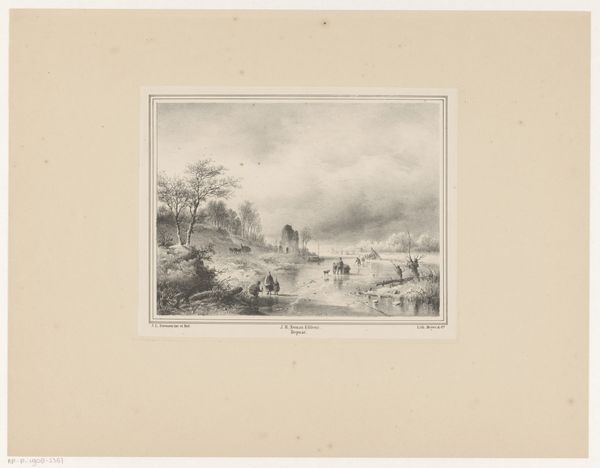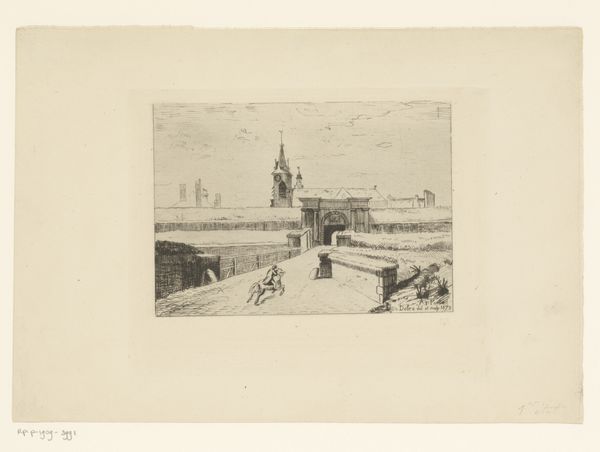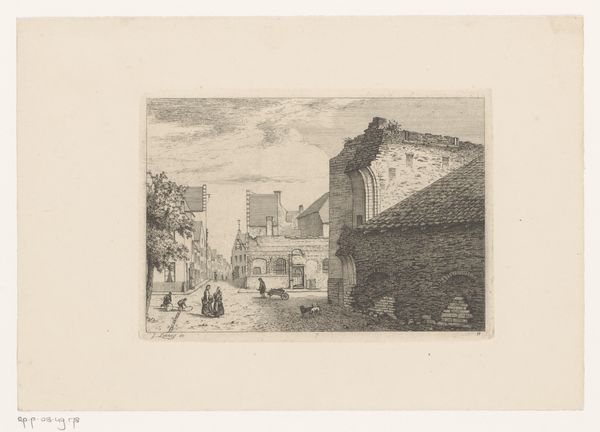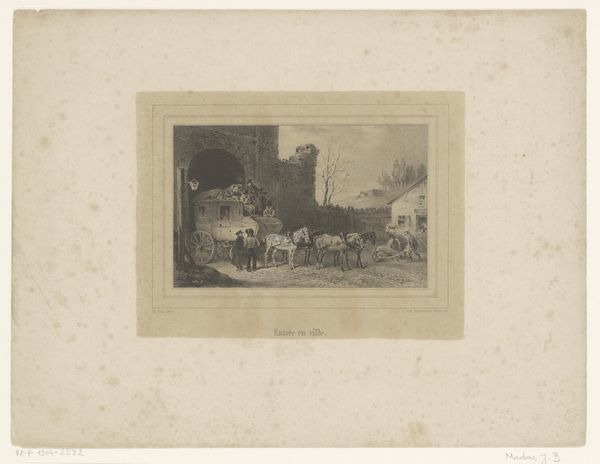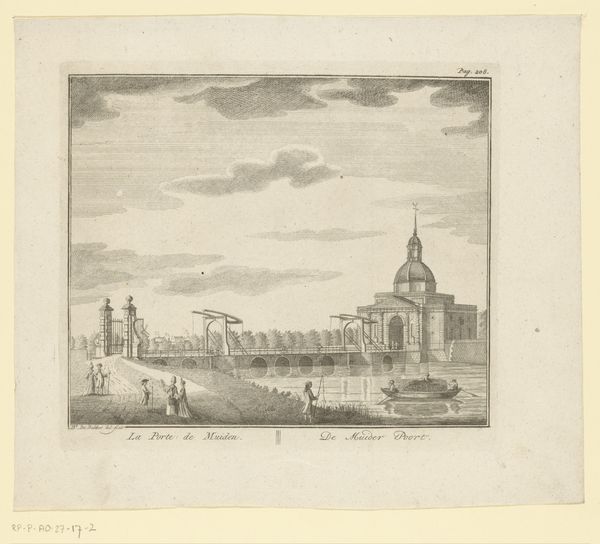
print, etching
#
16_19th-century
# print
#
etching
#
cityscape
#
history-painting
#
realism
Dimensions: height 166 mm, width 220 mm
Copyright: Rijks Museum: Open Domain
Curator: Léopold Flameng's etching, "Gezicht op de overdekte markt Carreau du Temple in Parijs," dating from 1859 to 1860, captures a bustling cityscape. What strikes you immediately about this piece? Editor: There's a certain melancholic stillness despite the implied activity. It feels more like a stage set than a lived space, the people rendered as mere elements of the architecture. Curator: It’s interesting that you say "stage set." Carreau du Temple, prior to its role as a marketplace, served as a Knights Templar monastery and, later, a site for public executions during the Revolution. This location is intrinsically woven with the theatre of power and social control. The market becomes, in Flameng's hands, another act in this unfolding drama. Editor: Exactly. And consider the demographics represented. Are we seeing a true cross-section of Parisian society, or is there an exclusion at play? Who benefits from this marketplace, and whose stories are conspicuously absent from the scene? Curator: That’s a crucial point. The etching technique, with its precise lines, adds a layer of formality, almost an official record of Parisian life. However, it inevitably becomes an artifact of privilege, portraying a sanitized view. How does Flameng negotiate Realism while perpetuating certain silences? Editor: Perhaps it's about capturing a moment of relative peace and prosperity before the tumultuous events that would soon engulf Paris? The Commune is just a decade away. This market scene almost seems deliberately disconnected from any brewing social unrest. Curator: The choice of etching itself carries a message. Its widespread reproducibility allows for broader dissemination, contributing to the construction—or perhaps the marketing—of an image of Paris for both domestic and international consumption. Editor: So, not just depicting reality, but actively shaping perception, influencing how Paris presented itself on the world stage. It's about power through representation, showcasing the city's commercial engine. Curator: Precisely. By delving into the work’s historical context, we can expose the complex layers beneath a seemingly straightforward city view, examining who is served and disserved by such a representation. Editor: It reminds me that every image, no matter how seemingly objective, is born of ideology and leaves behind ideological effects. A subtle reminder that seeing isn't always believing; rather, it is questioning.
Comments
No comments
Be the first to comment and join the conversation on the ultimate creative platform.
